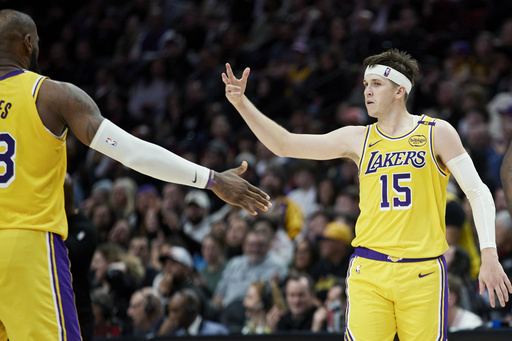The NBA is on the verge of witnessing an unprecedented shift in the way scoring occurs across the league. With only seven weeks left in the regular season, evidence suggests that for the first time in history, two-point shots are contributing to less than half of the league’s total scoring, settling at 49%. This trend, if maintained, marks a significant transformation in the game with three-pointers gaining dominance. At present, 2-point shots account for a record-low 49% of the points, while 3-pointers hit a record-high of 36%, and free throws contribute nearly 15%, close to a historic low. This statistical distribution is more proof of how the three-pointer is increasingly shaping the modern game, leaving many to question if the league is facing a fundamental issue.
Steph Curry of the Golden State Warriors, noted as the NBA’s all-time leader in 3-pointers, believes this evolution isn’t inherently problematic. He sees the proliferation of three-point attempts as a natural progression, as long as players work diligently to master it. Barring an unexpected reversal during the final weeks of play, the record for three-pointers in a season will fall again, continuing a 15-season streak, with attempts reaching new heights for the 19th season in the last 22 years.
Leading this three-point revolution is the Boston Celtics. They top the league with an astonishing 46% of their points coming from beyond the arc. This inclination towards 3s makes them a formidable offense, potentially joining the ranks of the 2018-19 Houston Rockets and the 2020-21 Utah Jazz in scoring more from 3s than 2s for a season. Celtics player Jayson Tatum emphasizes that while this strategy works well for them, it’s crucial for teams to play to their strengths and utilize the right talent.
The Celtics have achieved a unique milestone as the only franchise in the NBA’s annals to have eight players each scoring 100 three-pointers in a single season. This feat, repeated over the last two years, they seem prepared to accomplish yet again. Their formula is straightforward—they excel when making 17 or more three-pointers, as evidenced by their 33-6 record under such conditions. The far-reaching presence of shooters on their roster made for almost unbeatable matches, culminating in last year’s championship. Similarly, the Warriors have won four titles largely attributed to the prowess of the “Splash Brothers,” Curry and Klay Thompson. The strategic advantage? Hitting 40% of 3s is more productive than 50% of 2s in terms of scoring.
San Antonio’s Victor Wembanyama outlines a need for defenses to adapt to these changes. Wembanyama, despite recent health-related sidelining, was pursuing a considerable number of 3-point shots with 8.8 attempts per game, surpassing established sharpshooters like Devin Booker and Austin Reaves. His approach illustrates how even teams historically less focused on long-range shooting, like the Spurs, are embracing this transformation.
Golden State’s coach Steve Kerr, once an elite shooter, recognizes these shifts as the natural evolution of basketball. NBA Commissioner Adam Silver interprets these changes as part of a cycle, recalling past criticisms of physical play and an over-reliance on dunking at the turn of the millennium. Now, skilled shooting, even among seven-footers, is celebrated. Silver sees the integration of long-range shooting as a positive evolution of the game’s skill set.
The game’s landscape continues to develop, with opinions varying on the balance between strategic shooting and maintaining the sport’s integrity. These transformations set the stage for ongoing debate about basketball’s future direction as teams navigate these statistics-driven strategies.


